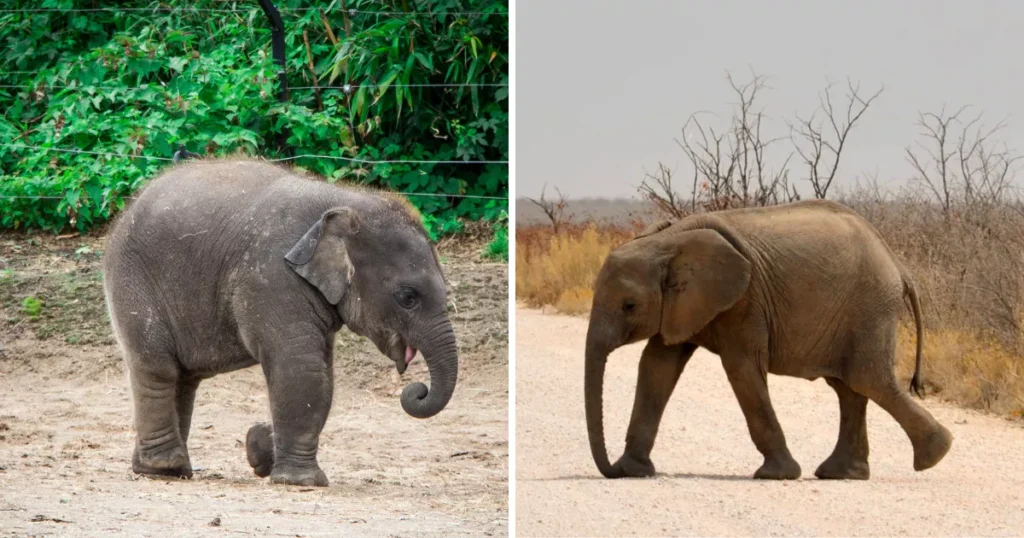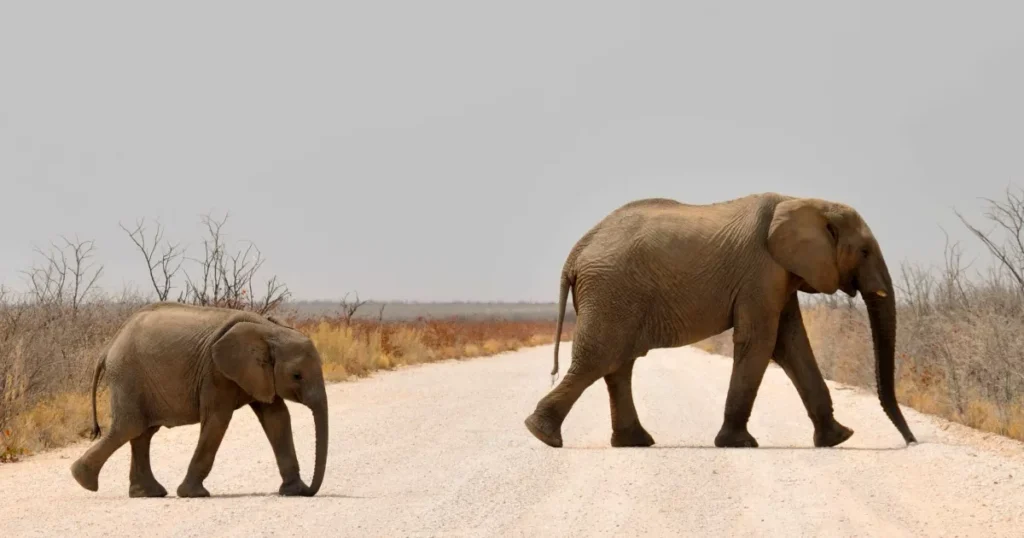Elephants, the colossal denizens of our world’s vast landscapes, exhibit fascinating growth trajectories. From the moment they take their first wobbly steps to when they emerge as the giants of their herds, the transformation is nothing short of extraordinary. But what does this growth curve look like? How does a baby elephant, already one of the heaviest newborns in the animal kingdom, evolve into the mighty full-grown creature we are so familiar with?
Let’s embark on a journey from birth to maturity, exploring the captivating growth journey of elephants.
The Newborn Elephant

Surprisingly, for such massive creatures, the journey begins quite humbly. Newborn elephants typically weigh between 220 to 250 lbs (100 to 113 kg). Their initial appearance is endearing, with wrinkled skin, a tuft of hair on their heads, and a short trunk they often trip over.
But don’t be mistaken by their seemingly fragile demeanor; these calves are quick learners. Within a few hours of birth, they can stand and walk, albeit shakily, ensuring they remain close to their protective mothers and the safety of the herd.
Childhood and Adolescence: Rapid Growth Ahead

As they navigate their formative years, young elephants experience a growth spurt. By their first birthday, they can weigh up to 1,000 lbs (454 kg). They continue to suckle from their mothers while introducing solid foods into their diet, learning from the older members about what plants are safe to consume.
When they reach the age of 10, their weight has shot up substantially. An African elephant can weigh as much as 5,000 lbs (2,268 kg), whereas an Asian elephant might be slightly lighter, around 4,500 lbs (2,041 kg). This period is also marked by the beginning of social lessons, as young males start sparring with each other, honing skills they would need for future confrontations.
Adulthood: Attaining Their Mighty Stature

As elephants transition into adulthood, the growth rate steadies but doesn’t halt. Female elephants generally attain their full size by the age of 25, with African elephants weighing between 5,000 to 8,000 lbs (2,268 to 3,629 kg) and their Asian counterparts ranging between 4,500 to 6,000 lbs (2,041 to 2,722 kg).
Male elephants, however, continue to grow throughout their lives. By the age of 40, an African bull elephant can weigh between 10,000 to 14,000 lbs (4,536 to 6,350 kg), and an Asian bull can range between 6,000 to 11,000 lbs (2,722 to 4,990 kg). It’s no wonder they are among the heaviest terrestrial animals on Earth!
Factors Influencing Growth
While genetics play a significant role, several external factors influence an elephant’s growth:
Diet is paramount; the quality and quantity of food can determine how quickly a calf grows.
Habitat conditions, including the availability of freshwater sources and the presence of threats like predators or human encroachments, can also impact growth.
Social structures within herds play a role too. Elephants are emotionally intelligent creatures. A nurturing environment, where young elephants are shielded from stress and taught essential life skills, can contribute positively to their physical and mental growth.
Conclusion
The journey of an elephant, from its first moments as a newborn calf to its majestic adult form, is a testament to the marvels of nature. These creatures, though gentle at heart, are titans in their right. Their growth curve, influenced by both internal and external factors, serves as a poignant reminder of the delicate balance in their ecosystems and our role in preserving it. As we marvel at their growth and stature, we must also commit to ensuring these magnificent beings continue to grace our world for generations to come.